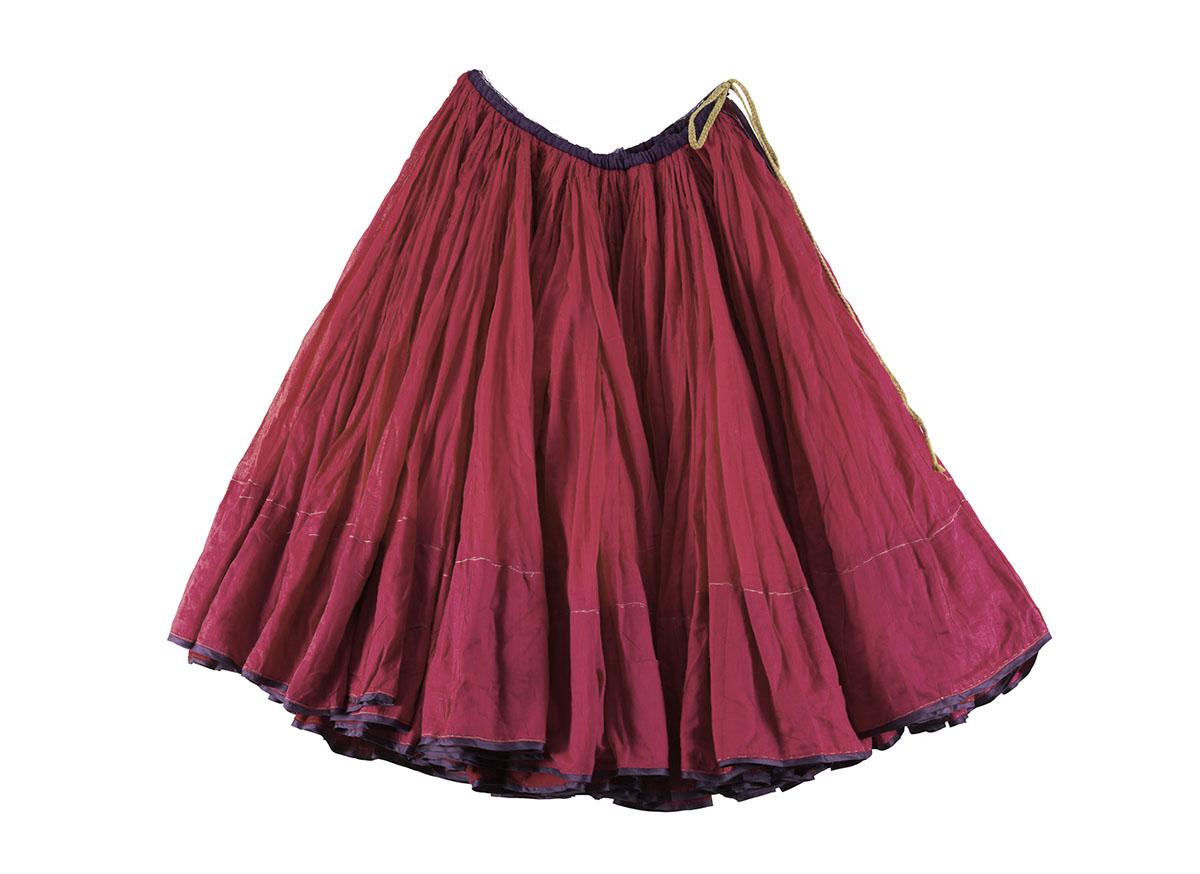ARTICLE
Ghagra
Worn by women across North India, the ghagra is a gathered, skirt-like garment stitched with a single, vertical seam. It is tightly secured at the waist with the use of a drawstring or nada, also known as the izarband, which makes the fabric fall in vertical pleats and flare out at the bottom. The name ghagra is believed to have derived from the word gher, meaning “flare” or “girth.” It is also known as chaniyo or chania in Gujarat and Rajasthan, possibly deriving from the word charan, meaning “feet,” since the skirt falls till the feet of the wearer.
The ghagra is believed to have evolved from the bhairnivasani. A similar garment that emerged in the medieval period is the lehenga, which is stitched with a smaller girth, making it less flared than a ghagra. Traditionally, the ghagra is ankle-length or longer and worn with a blouse or choli, alongside which a dupatta or odhni may also be added. The ghagra and odhni are also sometimes paired with a kurti or abho and a fitted bodice called the kanchali. Another variation of the ghagra is the kalidar ghagra, which is fuller than a standard ghagra and consists of triangular pieces of fabric stitched together at the top. The ends of the drawstring used to hold the ghagra at the waist — which are visible and dangle down the sides of the skirt — are often adorned with tassels, pom-poms or cowrie shells.
Prior to the nineteenth century, ghagras were predominantly worn by Hindu women and later gained popularity with Muslim women. The ghagras worn by royalty were often elaborately embroidered or brocaded whereas those worn by ordinary women were made of coarser fabrics.
Today, the ghagra is popular for everyday use as well as special occasions.
Bibliography
Our website is currently undergoing maintenance and re-design, due to which we have had to take down some of our bibliographies. While these will be re-published shortly, you can request references for specific articles by writing to hellomapacademy@map-india.org.








